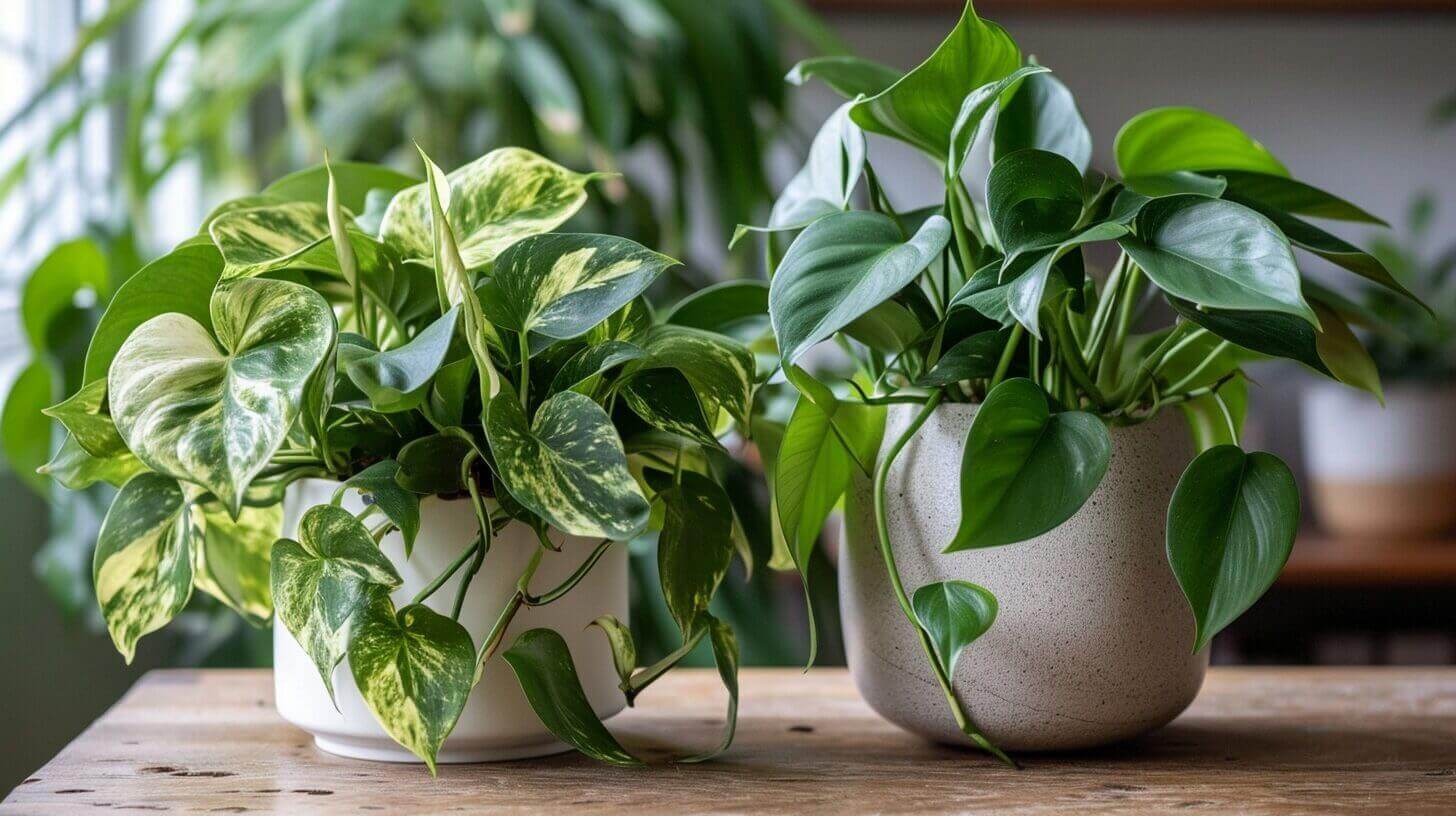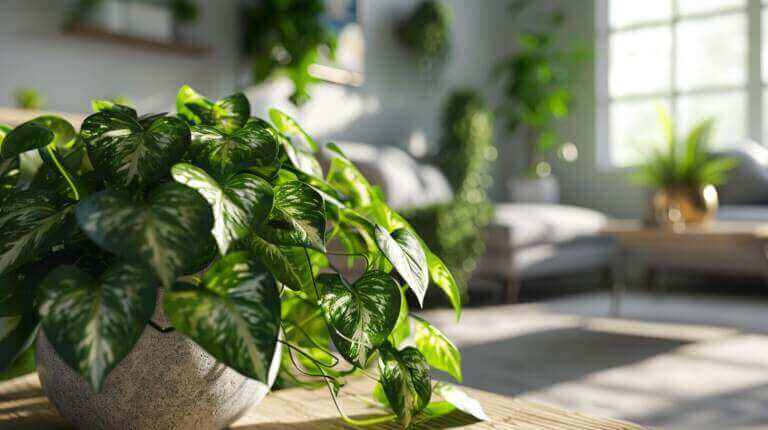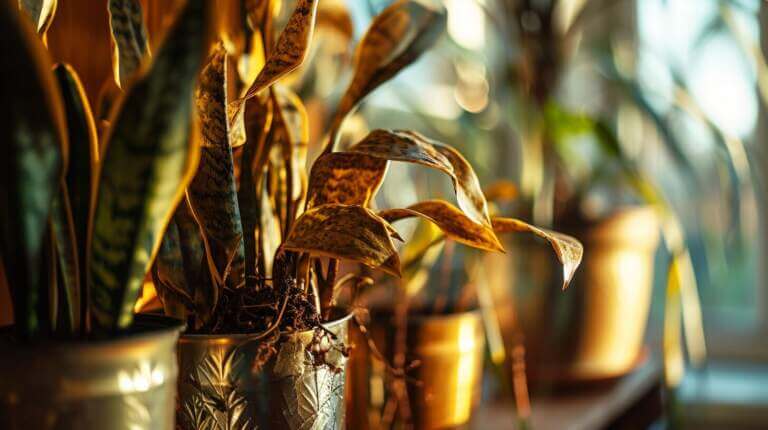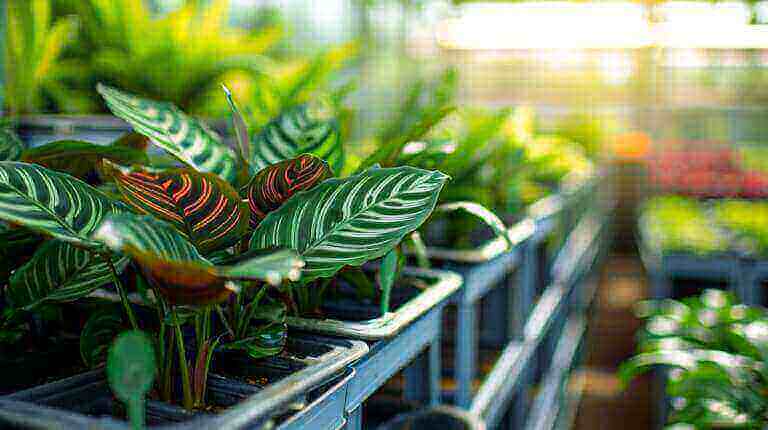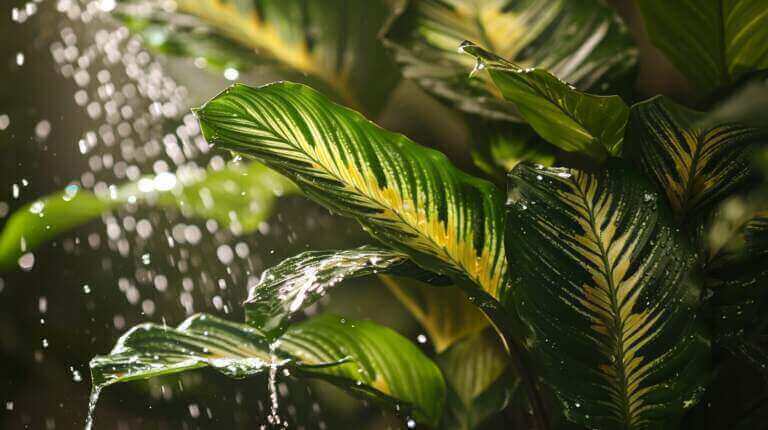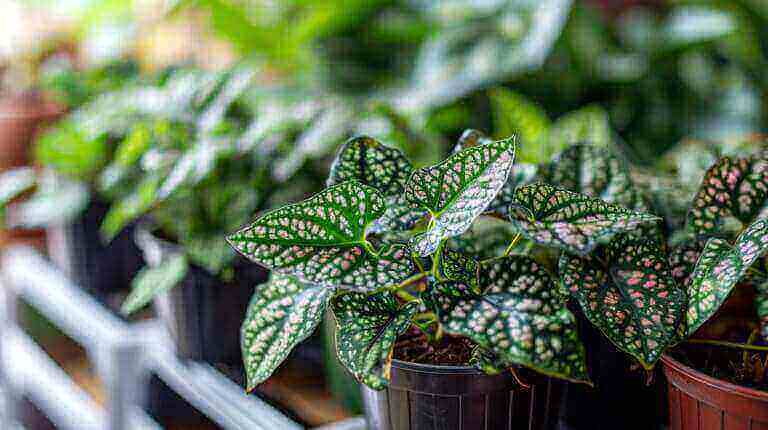Pothos vs Philodendron: How to Choose Between These Two Plants
In the world of indoor plants, the choice between philodendron and pothos is often a difficult one. Both plants offer unique characteristics and benefits, making it challenging to decide which one is the perfect fit for your space.
This article aims to provide an informative and organized comparison between philodendron and pothos, exploring factors such as growth, size, light requirements, care tips, and decorative uses.
By the end, you will have the knowledge and confidence to choose the ideal plant that aligns with your preferences and desired freedom.
Key Takeaways
- Philodendrons and pothos plants have different growth habits, with philodendrons growing taller and wider while pothos plants have trailing vines.
- Both plants thrive in bright, indirect light, but philodendrons can tolerate lower light conditions better than pothos.
- Regular pruning is important for both plants to control their size and shape and promote healthy growth.
- Proper watering and humidity levels are crucial for the health of both plants, as overwatering can lead to root rot and they prefer moderate to high humidity levels.
Pothos and Philodendron Growth and Size Comparison
The growth and size of the philodendron and pothos plants can vary significantly, making it important to understand the differences between them.
Both plants can be grown both indoors and outdoors, but they have different preferences when it comes to conditions.
Philodendrons thrive in indoor environments with bright, indirect light and high humidity. They can grow quite large, with some varieties reaching up to several feet in height and width.
On the other hand, pothos plants are more adaptable and can tolerate a wider range of light conditions, making them suitable for both indoor and outdoor settings. They tend to have trailing vines that can grow several feet long.
When it comes to pruning techniques, philodendrons benefit from regular pruning to control their size and shape, while pothos plants can be easily propagated by cutting and rooting their vines.
Difference Between Pothos and Philodendron Light and Temperature Requirements
Proper light and temperature conditions are essential for the successful growth and development of both philodendron and pothos plants. Understanding their indoor vs outdoor requirements and making seasonal adjustments is crucial to ensure their well-being. Here are three important factors to consider:
Light Requirements:
- Both philodendron and pothos thrive in bright, indirect light.
- Philodendron can tolerate lower light conditions better than pothos.
- Indoors, they can be placed in areas with moderate to high light.
- Outdoor plants should be protected from direct sunlight.
Temperature Preferences:
- Philodendron and pothos are tropical plants that prefer temperatures between 65-85°F (18-29°C).
- They can adapt to slightly lower temperatures but prolonged exposure to cold drafts can harm their growth.
- It’s important to keep them away from air conditioning vents or cold windows during winter.
Seasonal Adjustments:
- During warmer months, both plants can be moved outdoors to benefit from increased light and airflow.
- They should be gradually introduced to the outdoor environment to prevent shock.
- As winter approaches, it’s advisable to bring them back indoors and make necessary adjustments to maintain optimal conditions.
Understanding the light and temperature requirements of philodendrons and pothos is essential for their successful cultivation. Now, let’s move on to discuss their watering and humidity needs.
Pothos vs Philodendron Watering and Humidity Needs
One important aspect to consider when caring for philodendron and pothos plants is their watering and humidity needs.
Both plants require regular watering, but it is crucial not to overwater them as it can lead to root rot. The frequency of watering will depend on various factors such as the size of the pot, the humidity levels, and the temperature of the environment. As a general rule, it is advisable to allow the top inch of soil to dry out before watering again.
In terms of humidity, both philodendron and pothos thrive in environments with moderate to high humidity levels. To increase humidity, you can mist the plants regularly or place them on a tray filled with water and pebbles.
Monitoring the watering frequency and humidity levels will help ensure healthy growth for both philodendron and pothos plants.
Philodendron vs Pothos Care and Maintenance Tips
Care and maintenance are essential for ensuring the long-term health and vitality of both philodendron and pothos plants. To keep these plants thriving, here are some care and maintenance tips to consider:
- Pruning techniques: Regularly trim and prune your philodendron and pothos plants to promote healthy growth and prevent overcrowding. Remove any dead or yellowing leaves to maintain a neat and tidy appearance.
- Common pests and diseases: Both philodendron and pothos plants are susceptible to common pests such as aphids, spider mites, and mealybugs. Keep an eye out for any signs of infestation and treat them promptly. Additionally, be mindful of common diseases like root rot and leaf spot, which can be prevented by providing proper drainage and avoiding overwatering.
By following these care and maintenance tips, you can ensure that your philodendron and pothos plants stay healthy and vibrant.
Now, let’s move on to explore their decorative uses and aesthetic appeal.
Difference Between Philodendron and Pothos Decorative Uses and Aesthetic Appeal
When considering the decorative uses and aesthetic appeal of philodendron and pothos plants, it is important to take into account their unique characteristics and suitability for various indoor spaces.
Both plants are known for their lush green foliage, which adds a touch of nature and freshness to any room.
While both philodendron and pothos can be used to enhance the visual appeal of indoor spaces, their suitability for outdoor use may vary.
Philodendron plants are more commonly used as indoor decorative plants due to their preference for low to medium light conditions.
On the other hand, pothos plants can be grown both indoors and outdoors, making them a versatile choice for those who desire freedom in their plant placement.
In terms of propagation methods, both philodendron and pothos can be easily propagated through stem cuttings, allowing for the creation of new plants to further enhance the aesthetic appeal of your space.
Frequently Asked Questions
Can Philodendron and Pothos Plants Be Propagated Easily?
Philodendron and Pothos plants are both relatively easy to propagate. There are several methods that can be used, such as stem cuttings or division of the plant.
The best conditions for propagation include providing a warm and humid environment, and ensuring that the cuttings or divisions have access to adequate moisture and indirect sunlight.
With proper care and attention to these factors, both Philodendron and Pothos plants can be successfully propagated.
What Light Requirements Do Pothos Plants Have Compared to Philodendron Plants?
Pothos and philodendron plants have similar light requirements for optimal growth. Both thrive in bright, indirect light but can tolerate lower light conditions. When nurturing your philodendron plants, ensure they receive sufficient but filtered sunlight to prevent scorching their leaves. Similarly, provide the same light conditions for your pothos plants to encourage healthy development and lush foliage.
Are Philodendron and Pothos Plants Toxic to Pets?
Philodendron and Pothos are both popular houseplants known for their beauty and ease of care.
However, one important consideration for pet owners is whether these plants are toxic to animals.
While philodendron contains calcium oxalate crystals that can cause irritation and discomfort if ingested by pets, Pothos is considered highly toxic and can lead to more severe symptoms.
It is crucial for pet owners to keep these plants out of reach or opt for pet-friendly alternatives to ensure the safety and well-being of their furry friends.
Do Philodendron and Pothos Plants Require Any Specific Soil Type?
When it comes to the specific soil requirements for philodendron and pothos plants, it is important to consider their growth patterns. Both plants thrive in well-draining soil that is rich in organic matter.
However, philodendron plants prefer slightly moist soil while pothos plants can tolerate drier conditions. It is recommended to use a well-balanced potting mix for both plants, and to monitor moisture levels to ensure optimal growth.
How Often Should I Fertilize Philodendrons and Pothos Plants?
Fertilizing frequency is an important aspect of plant care, as it directly impacts the overall health and growth of plants.
When it comes to philodendron and pothos plants, it is recommended to fertilize them every 4-6 weeks during the growing season.
However, it is essential to be mindful of the specific needs of each plant and adjust the fertilizing frequency accordingly.
Some popular fertilizers for these plants include balanced water-soluble fertilizers or organic options like compost tea or fish emulsion.
Can Pothos or Philodendron Plants Be Grown in Hanging Baskets?
Both philodendron and pothos plants can be grown in hanging baskets as long as their specific growing requirements are met. These plants thrive in well-draining soil and indirect sunlight.
It is important to provide regular care for these plants, including watering when the top inch of soil is dry and fertilizing every 2-4 weeks during the growing season.
Hanging baskets allow these plants to cascade down and create a beautiful display in any indoor or outdoor space.
What are philodendrons?
Philodendrons are a large genus of flowering plants in the family Araceae. They are native to tropical regions and are commonly grown as houseplants for their attractive foliage.
Can you describe a philodendron plant?
A philodendron plant is characterized by its large, glossy, and typically heart-shaped leaves. It’s a vining plant that can grow quite large in the right conditions.
What are the key differences between pothos and philodendron plants?
The key differences lie in their leaf shape, growth habit, and aerial roots. For instance, the pothos leaf is generally more variegated with a golden hue, while the philodendron leaf is usually solid green and heart-shaped.
Can you tell the difference between pothos and philodendrons just by looking at them?
Yes, you can tell the difference by examining their leaves. Pothos leaves are usually variegated with yellow or white splotches. Philodendron leaves are typically solid green, but there can be exceptions.
What are some popular pothos varieties?
Some popular pothos varieties include the golden pothos, marble queen pothos, jade pothos, and neon pothos. Each variety has a unique leaf color and pattern.
What are some common philodendron varieties?
Some common philodendron varieties include the heartleaf philodendron, philodendron hederaceum, and various hybrid species. They vary in leaf shape, size, and color.
How do I care for these indoor plants?
Both pothos and philodendrons are easy to care for. They prefer indirect light and well-draining soil. Water them when the top inch of soil feels dry to touch.
What is an aerial root and do these plants have them?
Aerial roots are roots that grow from the stem of the plant above the ground. Both pothos and philodendrons produce aerial roots, which help them climb and absorb nutrients.
How can I tell them apart based on their aerial roots?
While both plants produce aerial roots, those of the philodendron are typically thicker and have a rough texture compared to the smoother and thinner roots of the pothos.
Are there different types of pothos plants?
Yes, there are several types of pothos plants including golden pothos, jade pothos, marble queen pothos, neon pothos, and satin pothos. Each type has distinct leaf colors and patterns.
What’s the difference between a pothos and a philodendron in terms of care requirements?
Both plants have similar care requirements as they both prefer indirect light and well-draining soil. However, philodendrons generally prefer higher humidity levels than pothos.
Can you tell me more about plant varieties within these two species?
There are numerous plant varieties within both the pothos and philodendron species. Varieties differ in terms of leaf color, size, shape, and growth habit.
How can I tell if my houseplant is a philodendron or pothos?
You can tell by looking at the leaves and petioles. Pothos leaves tend to be more variegated with a golden hue while philodendron leaves are usually solid green. The petiole (the stalk that attaches the leaf to the stem) of a pothos is grooved while that of a philodendron is smooth.
What Are the Main Differences Between Pothos and Philodendron Plants?
Pothos and Philodendron plants may share similarities, but their main differences lie in their growth patterns and leaf structures. While Pothos features heart-shaped leaves and cascading vines, Philodendron plants vary greatly depending on the specific type of philodendron. Some philodendrons have large, split leaves, while others have more compact foliage. Understanding these distinctions is crucial for proper care and identification of these popular houseplants.
What’s the difference between a pothos leaf and a philodendron leaf?
Pothos leaves tend to be more variegated with yellow or white splotches while philodendron leaves are usually solid green but can have variations depending on the variety.
Are there any key differences between these two when it comes to their growth habits?
Yes, while both are vining plants that can grow quite large in the right conditions, philodendrons tend to have a more upright growth habit while pothos tend to trail or climb.

